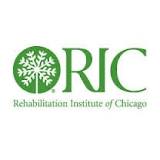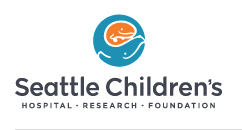Oral Baclofen Pharmacokinetics and Pharmacodynamics in Children With Spasticity
| Status: | Completed |
|---|---|
| Conditions: | Neurology, Neurology |
| Therapuetic Areas: | Neurology |
| Healthy: | No |
| Age Range: | 2 - 16 |
| Updated: | 10/14/2017 |
| Start Date: | November 2008 |
| End Date: | January 2011 |
Pediatric Pharmacokinetic and Pharmacodynamic Study of Oral Baclofen for the Treatment of Spasticity Associated With Cerebral Palsy
Oral baclofen is used commonly to treat spasticity in children with cerebral palsy. Although
for adults there is dosing,safety and efficacy information in the package insert, this is not
the case for children. The purpose of this study is to determine how fast the drug is cleared
from the body, the correct dose, and long-term safety and efficacy for children with
spasticity.
for adults there is dosing,safety and efficacy information in the package insert, this is not
the case for children. The purpose of this study is to determine how fast the drug is cleared
from the body, the correct dose, and long-term safety and efficacy for children with
spasticity.
Although oral baclofen has been used for several decades for the treatment of spasticity in
adults and in children, there is very little data regarding the pharmacokinetic (PK) or
pharmacodynamic (PD) properties of baclofen in children. Therefore, pediatric guidelines,
including dose ranges, dosing schedules, dose escalation strategies and anticipated side
effects are extrapolated from adult data and require an assumption that safety and efficacy
in children is comparable to that in adults. Furthermore, there is wide variability in dosing
strategies among practitioners who treat children with cerebral palsy (CP) with respect to
starting doses, maximum doses and rates of dose escalation.Establishment of safe and
effective dosing strategies for children with CP requires an understanding of the PK and PD
properties of baclofen in children and recognition of individual differences that may
contribute to divergent clinical responses to baclofen among children with CP.
adults and in children, there is very little data regarding the pharmacokinetic (PK) or
pharmacodynamic (PD) properties of baclofen in children. Therefore, pediatric guidelines,
including dose ranges, dosing schedules, dose escalation strategies and anticipated side
effects are extrapolated from adult data and require an assumption that safety and efficacy
in children is comparable to that in adults. Furthermore, there is wide variability in dosing
strategies among practitioners who treat children with cerebral palsy (CP) with respect to
starting doses, maximum doses and rates of dose escalation.Establishment of safe and
effective dosing strategies for children with CP requires an understanding of the PK and PD
properties of baclofen in children and recognition of individual differences that may
contribute to divergent clinical responses to baclofen among children with CP.
Inclusion Criteria:
1. Males and females aged 2-16 years, inclusive.
2. Triceps skinfold thickness between the 5th and 95th percentiles for age (Refer to
Appendix 3).
3. Gross Motor Function Classification Scale (GMFCS) Level II - V (GMFCS classifies
children by functional mobility with Level I indicating minimal motor disability and V
indicating total body involvement and dependence on others for mobility (Palisano et
al, 1997).
4. Ashworth score of 2 or higher in at least one arm and one leg (knee + elbow flexors
and/or extensors).
5. Cerebral Palsy: Motor disability due to a static, non-progressive brain injury/
malformation occurring prenatally or any time prior to the age of 2 years.
6. No history of baclofen use within the past 4 months.
7. Female subject, is premenarchal, or is incapable of pregnancy because of a
hysterectomy or tubal ligation; or female subject who is sexually active and capable
of pregnancy, has been using an acceptable method of contraception (hormonal
contraceptives, intrauterine device, spermicide and barrier) for at least one month
prior to study entry and agrees to continue to use one of these for the duration of
the study; or female subject who is sexually abstinent and capable of pregnancy,
agrees to continued abstinence or to use an acceptable method of birth control (either
intrauterine device or spermicide and barrier) should sexual activity commence.
8. Subject ≥10 years of age has negative urine tests at screening and baseline for
alcohol, non-medically prescribed drugs of abuse, and no history of tobacco use.
Exclusion Criteria:
1. Hypersensitivity to baclofen.
2. Selective dorsal rhizotomy.
3. Active intrathecal baclofen pump within the past 6 months.
4. Use of botulinum toxin in past 4 months or use any time during the study.
5. Use of tone altering medications (e.g. baclofen, benzodiazepines, levodopa,
trihexyphenidyl) for >3 consecutive days duration within the past 4 months.
6. Start of any drug or product known to be a significant cytochrome P450 enzyme inducer
or inhibitor within the past 30 days.
7. Orthopaedic surgery within the past year or any time during the study.
8. Abdominal surgery within the past six months or any time during the study.
9. Uncontrolled seizures (baseline seizure frequency >1 per month or history of more than
2 prolonged seizures lasting longer than 5 minutes duration within the past year.
10. Severe behavior difficulties or psychiatric disturbance
11. Proven gastric dysmotility: known history of abnormal gastric emptying study and/or
history of vomiting 3 or more times per week.
12. Severe Gastroesophageal Reflux Disease: known history of esophagitis (documented on
abnormal endoscopy or biopsy).
13. Malnutrition: defined as triceps skin fold thickness less than 5th or greater than
95th percentile for age.
14. Renal or Liver disease: Elevated bilirubin, LFTs greater than twice the upper limit of
normal, reduced BUN/Cr ratio (<5), or abnormal creatinine clearance that is clinically
significant as determined by the investigator.
15. Abnormal CBC: Anemia, polycythemia, neutropenia, leukocytosis, thrombocytopenia, or
thrombocytosis clinically significant as determined by the investigator.
16. Pregnancy or lactation.
17. Severe respiratory or cardiac disease: Requirement for prolonged supplemental oxygen
(>7 days), history of clinically significant congenital heart disease, congestive
heart failure or cardiomegaly, and/or hospital admission within past 6 months for
cardiac symptoms or respiratory distress.
18. Previous baclofen failure: Lack of response to baclofen or presence of unacceptable
side effects. If previous baclofen therapy was tried >4 months prior to study and
discontinued, the decision to enroll subject will be at the discretion of the site
investigator and reason for discontinuation of oral baclofen will be recorded.
19. Use of medications that interfere with measurements of serum creatinine levels within
the past 14 days (e.g., trimethoprim-sulfa, fibric acid derivatives other than
gemfibrizol, keto acids, salicylates, some cephalosporins, cimetidine, phenacemide) .
20. Subject tests positive at screening for the hepatitis B surface antigen or hepatitis C
antibody, or has a history of a positive result for one of these tests.
21. Subject is known to have tested seropositive for the human immunodeficiency virus
(HIV) or subject is concomitantly receiving anti-retroviral therapy.
22. Any serious, unstable medical illness or clinically significant abnormal laboratory
assessment that would adversely impact the scientific interpretability or unduly
increase the risks of the protocol.
23. Subject has a disorder or history of a condition, other than that related to CP that
could interfere with drug absorption, distribution, metabolism, or excretion.
24. Any condition which would make the patient
We found this trial at
11
sites
3333 Burnet Avenue # Mlc3008
Cincinnati, Ohio 45229
Cincinnati, Ohio 45229
1-513-636-4200

Cincinnati Children's Hospital Medical Center Patients and families from across the region and around the...
Click here to add this to my saved trials
Kennedy Krieger Institute While not officially part of Johns Hopkins Medicine, Kennedy Krieger Institute is...
Click here to add this to my saved trials
1204 West Main Street
Charlottesville, Virginia 22903
Charlottesville, Virginia 22903
Click here to add this to my saved trials
Rehabilitation Institute of Chicago The Rehabilitation Institute of Chicago (RIC) is an independent, 501(c)3, non-profit...
Click here to add this to my saved trials
Texas Children's Hospital Texas Children's Hospital, located in Houston, Texas, is a not-for-profit organization whose...
Click here to add this to my saved trials
Click here to add this to my saved trials
Click here to add this to my saved trials
Seattle Children's Hospital Seattle Children’s Hospital specializes in meeting the unique physical, emotional and developmental...
Click here to add this to my saved trials
Click here to add this to my saved trials
Click here to add this to my saved trials
Click here to add this to my saved trials



